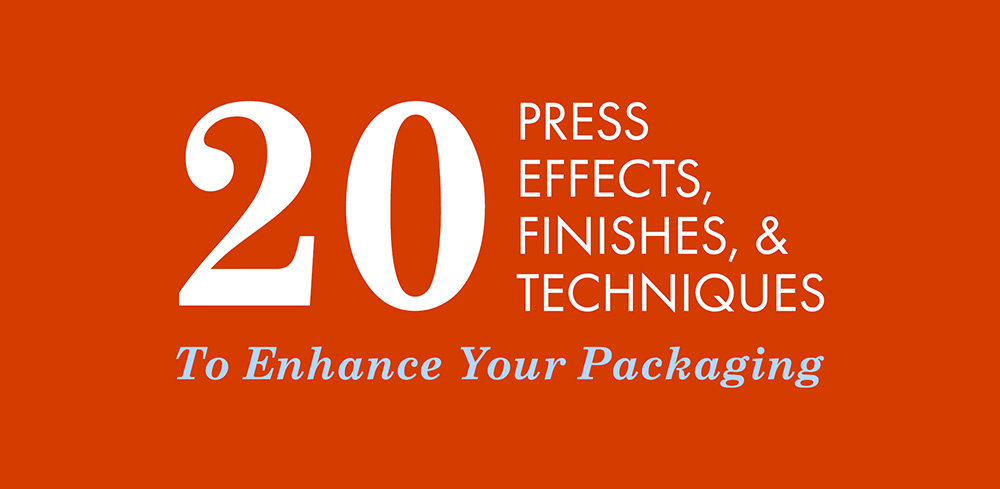
Visually attractive packaging is crucial for sales success, and although you may know a great deal of attention goes into making high-quality packaging designs, you may not realize how much of the overall look comes down to the details. Learn how you can use different finishes and press effects to take your packaging to the next level.
1. GLOSS UV COATING
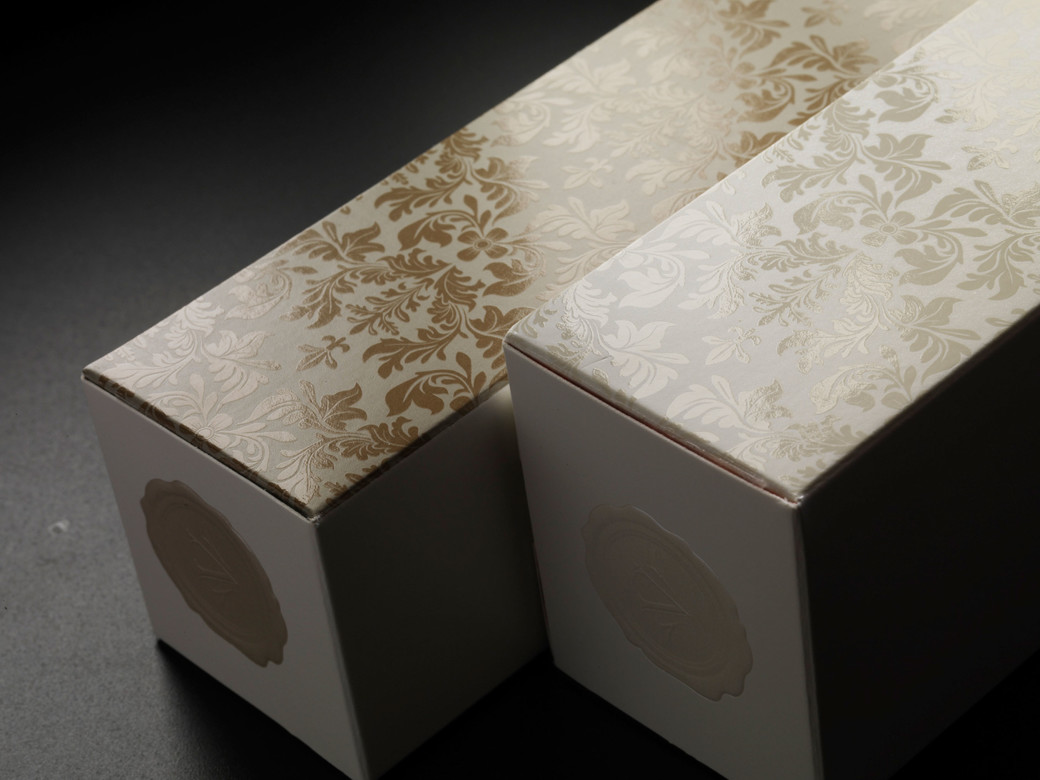
This is one of the most popular coatings used in the industry. It provides a clear coating with a high gloss. An added benefit of UV coating printing is that it can also serve as a protectant.
UV coatings are a liquid-based, protectant coating that is applied and instantly cured with UV drying lamps. Compared to aqueous coatings, UV coatings provide an extreme-glossy finish and can deliver an abrasion- and rub-resistant performance. In order to get the best results, inks must be wax-free or UV compatible.
2. RAISED UV COATING
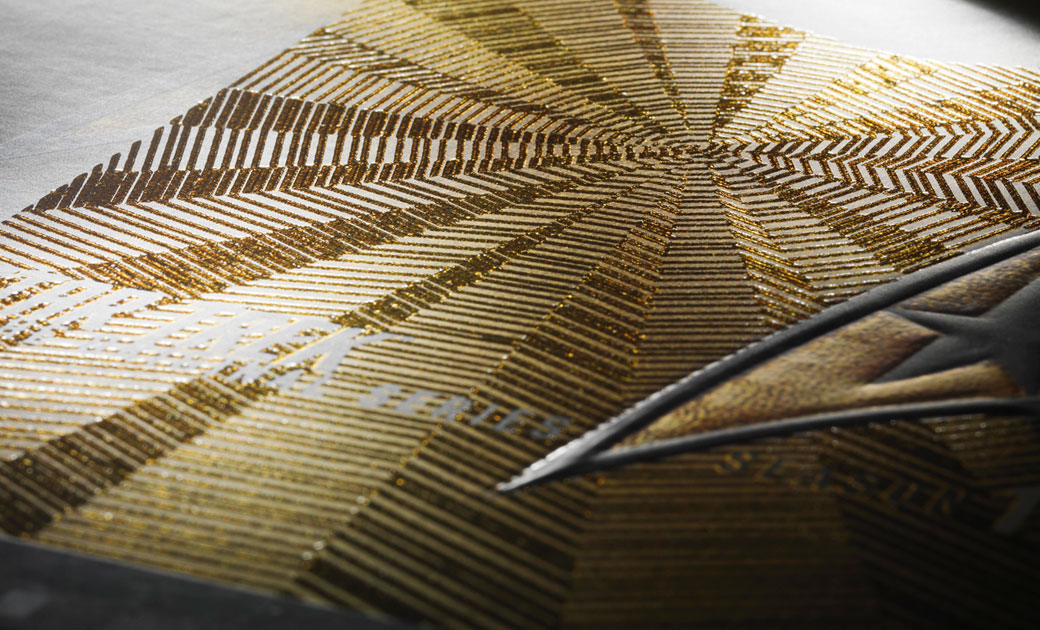
A great way to add a tactile or more dramatic effect is by using a raised UV coating printing. Adding more coating volume brings more added dimension that can accentuate the art or graphic, as well as invite the consumer to engage and touch the spot UV pattern or UV varnish printing.
A great example of this raised UV gloss coating can be seen on this Star Trek DVD o-sleeve cover.
3. SPOT UV PATTERN
A common use of spot UV is to draw attention to a certain area of the printed piece, such as placing spot UV pattern over a logo so that only the logo area is glossy.
4. PEARLESCENT COATING
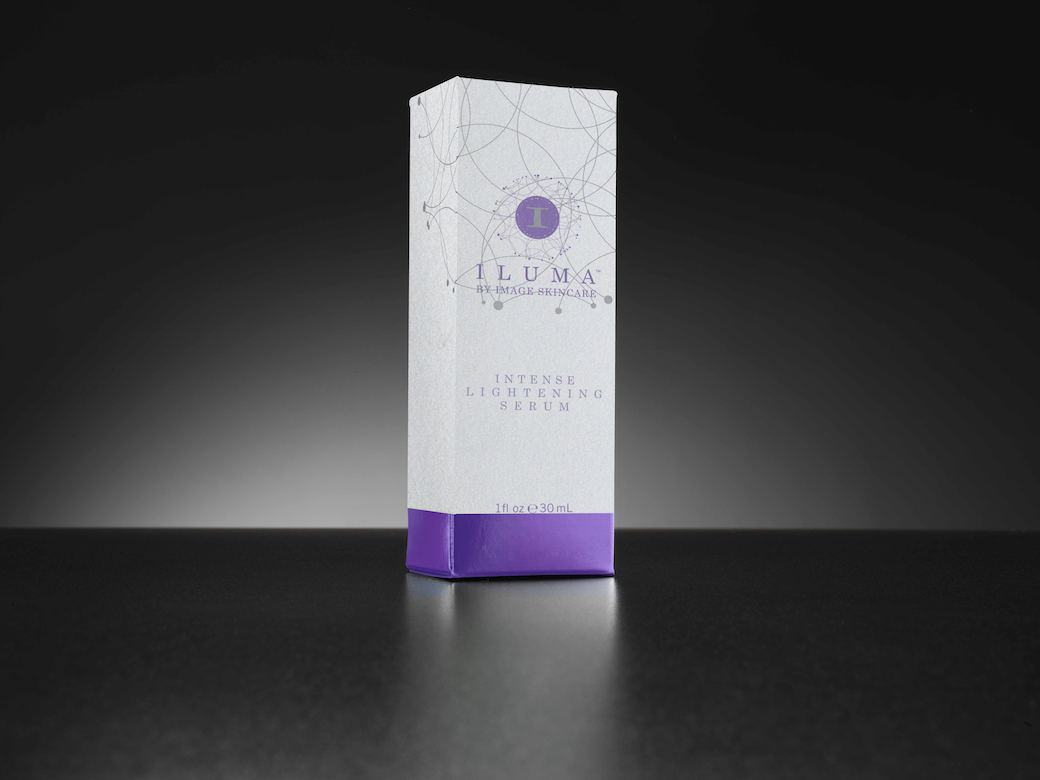
If a luxurious shimmer appearance is what you’re looking for, then a pearlescent coating is the way to go. Pearlescent coatings can be either aqueous or UV-based. For UV-based coatings, a specific quantity of pearl additive is mixed with a gloss UV coating. Depending on the variation and size of the micron particle, the pearlescent coating can have a more dramatic or subtle effect. The AQ-based version of this coating is similar, but is mixed with a gloss AQ coating and pearl additive.
In the glitter coating family, pearlescent coatings are highly decorative and are used across multiple industries. The less-dramatic shimmer adds a unique appeal to any surface without having glitter overkill. The unique nature of a pearlescent coating may be applied over a number of different colors, which creates a pearl-like shade when viewed.

5. GLITTER COATINGS

For a stark and bold look, glitter coatings are the way to go. Glitter coatings are made when large glitter particles (50-200 microns) are added into UV gloss coating. They also come in a wide assortment of colors.
Glitter coatings command and demand attention especially when they are applied and contrasted against a more subtle area of the packaging like the luminaire on the right. It is also easy to see how brilliantly the glitter effect is magnified when a light source is put behind it.
6. VARNISHES
Varnishes serve many purposes included being used as a protectant to the sheet and, in the case of a dull varnish, can be used to create great contrast (step-off) against a higher gloss.
Spot Varnish & Flood Varnish
Like coatings, varnishes can be applied to very specific areas (spot varnish) or can be applied to a large print area or the entire press sheet (flood varnish).
7. SOFT TOUCH COATINGS
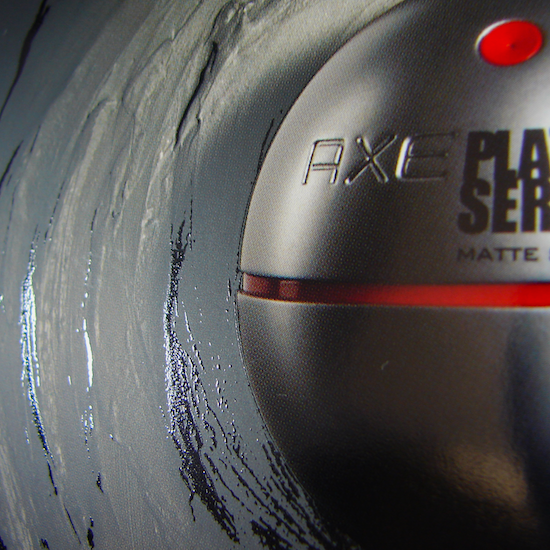
If you have ever touched a package that seemed so smooth and so subtle that it felt velvet? This is due to a soft touch coating or soft touch varnish application that creates a soft, velvety texture. It also makes the piece look softer than one with a high gloss or textured coatings.
8. METALLIC SHEEN
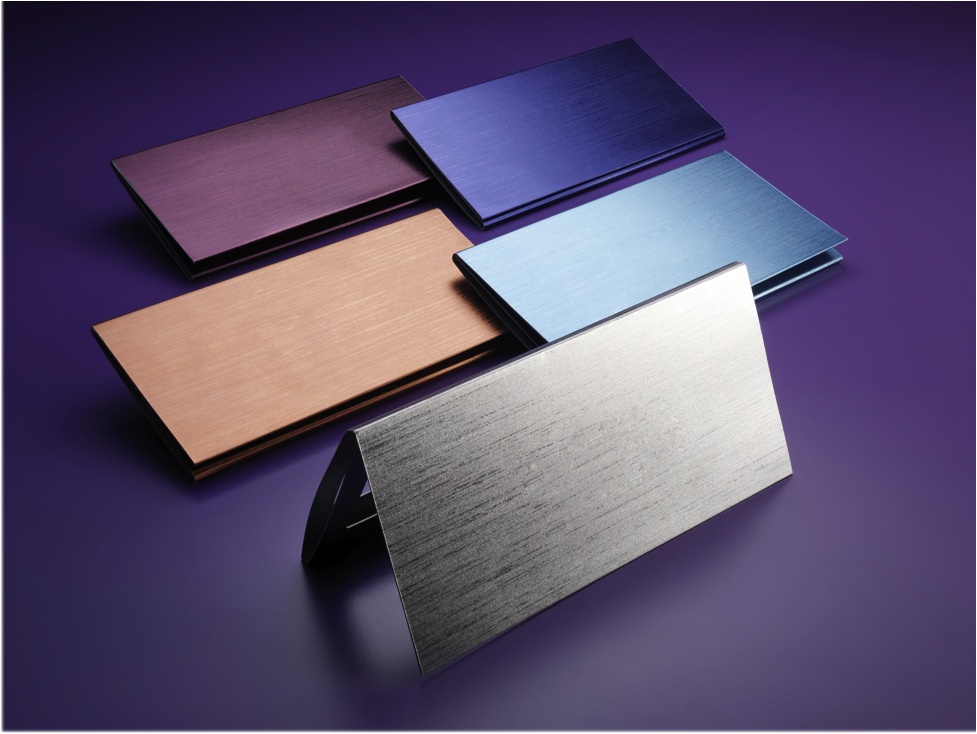
Silver and gold sheen coatings give any packaging a ritzy touch. These metallic sheens are shiny and bold without feeling too cold and metallic. Use under a base color to give it an extra gold glow or silver shimmer. Many industries continue to successfully use metallic sheens to reach their customers. Take advantage of the seemingly inherent desire of humans to gravitate towards metallic. If your budget doesn’t allow for foil stamping, metallic sheens are a great cost-effective alternative that delivers the same look and feel.
9. IRIODIN
This UV coating contains very small particles, which results in a subtle, shimmer effect, creating a vibrant luster that is almost equal to a natural pearl’s sheen. Available in natural colors, this coating may appear silky smooth or as polished as a diamond. The incredible effects available with this coating make it a highly coveted way to make a package stand out. High standards of quality control make this trademarked coating a winner in almost every category.
10. GRIT COATING
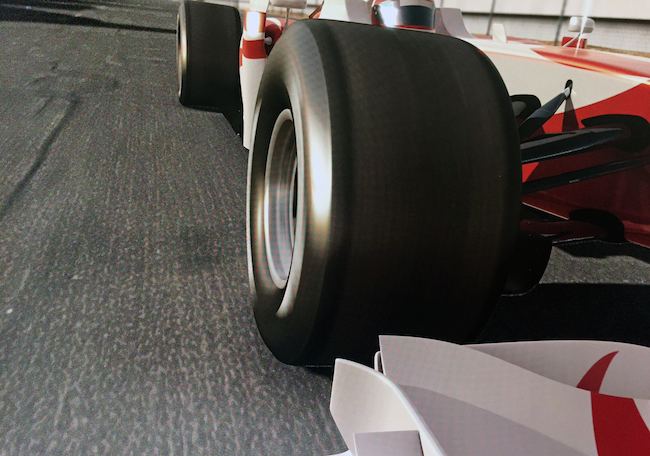
This coating is known for their coarse and rugged tactile effect. Although it is softer than a sheet of sandpaper, the reputation of this coating is the grittiest when it comes to tactile coating effects. The grip of the coating is useful as a non-slip surface and works well in applications for multi-use packaging.
11. SANDPAPER COATINGS
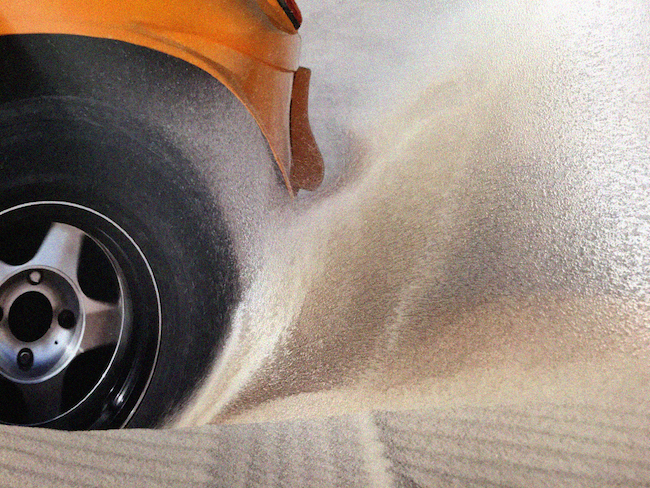
Sandpaper coatings are more subtle than grit coatings and provide only a slightly rough texture. The coating is similar to some unglazed clay work and gives plastics and paper products a slightly edgy feel.
In both coating applications, you can control the amount of texture that is applied on the sheet by the size of the billion cubic micron (BCM) rollers. The smaller the BCM rating of the coating roller, the lesser the amount of coating it can carry and be applied to the sheet and vise versa for higher BCM’s.
Both grit and sandpaper can be used on a variety of substrates that allow for a stimulating tactile experience.
12. RETICULATION EFFECT
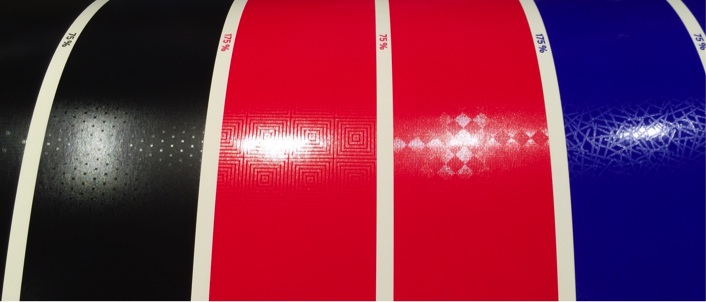
Another way to achieve a signature visual and/or tactile effect is with an on-press process called reticulation. This effect is achieved when a spot varnish and an overall UV coating is applied. When these two are mixed, there is a chemical reaction that results in a tactile and visual effect.
Working with a printer who has the press technology to properly manipulate dwell/dry times of their dryers and who have the expertise to play with chemistries means you will get the most unique and incredible results.
Different pattern effects can also be achieved by using a varnish plate with a distinct pattern to it. By creating a reaction with the UV gloss coating and manipulating the dry times, the effects your packaging could feature are limitless.
13. EMBOSSING & DEBOSSING
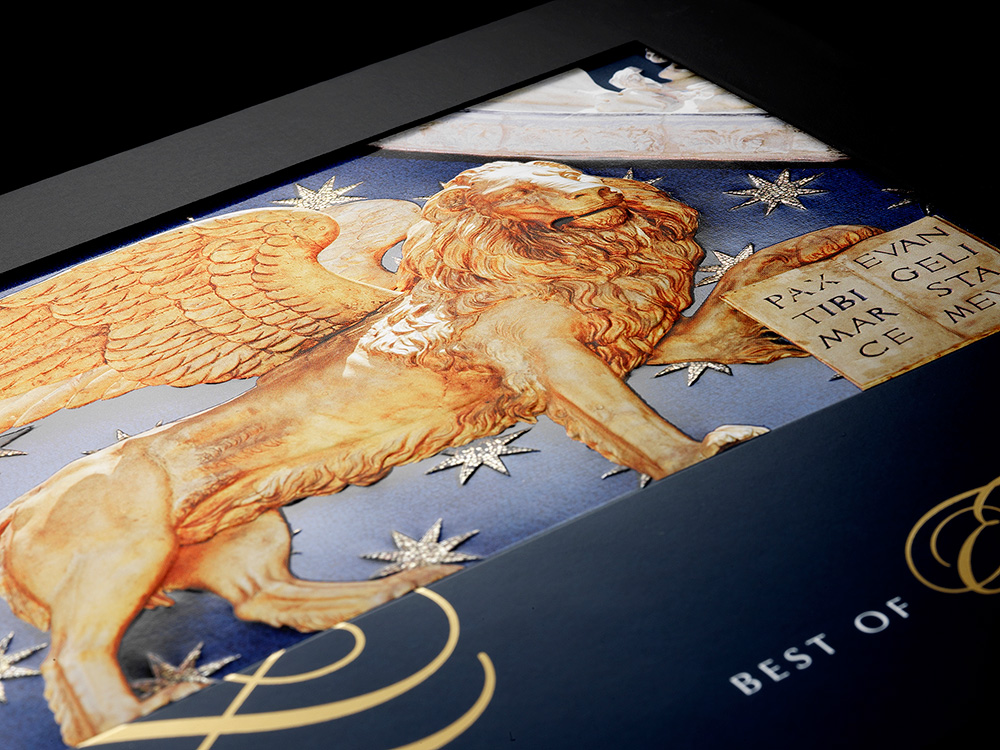
Historically used to make a statement, embossing continues to be an assertion of elegance and luxury. Raising and depressing aspects of your packaging gives your customers a more interesting package handling due to the tactile coating.
Use a contrasting material in your design to differentiate the surface of your material or bring a character to life. Here are a few embossing and debossing techniques to consider.
Sculptured
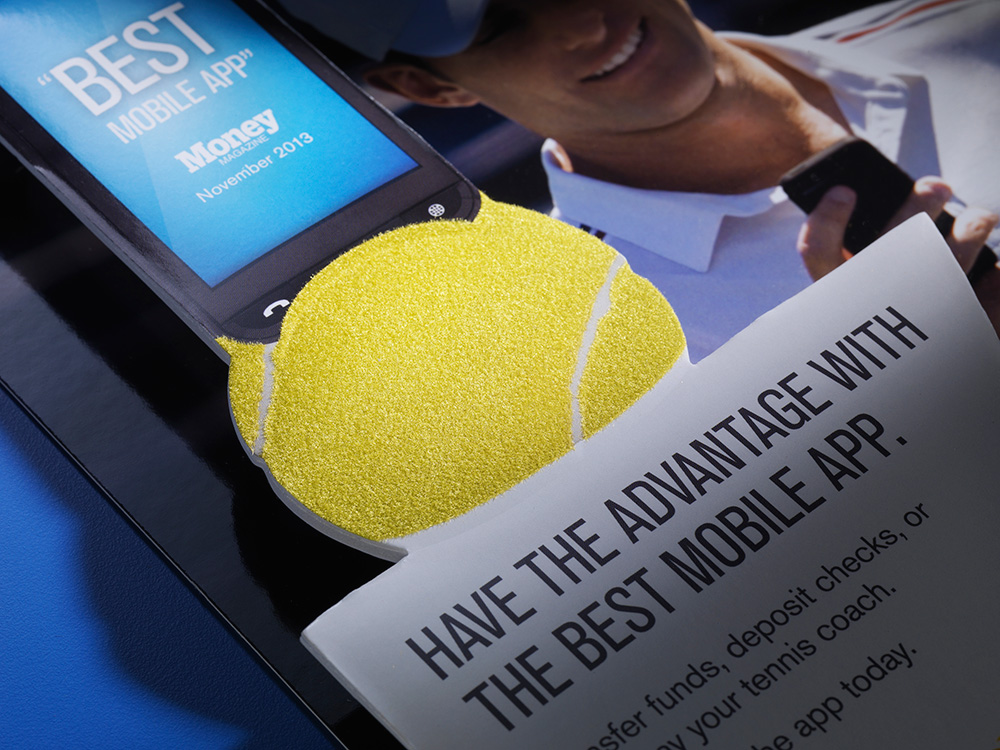
This form involves raising or lowering features of a design in a sharp or rounded manner. Sculptured subjects are carefully rendered to depict definition and texture in a realistic manner. Sculptured embossing is often a hand-crafted process.
Multi-Level
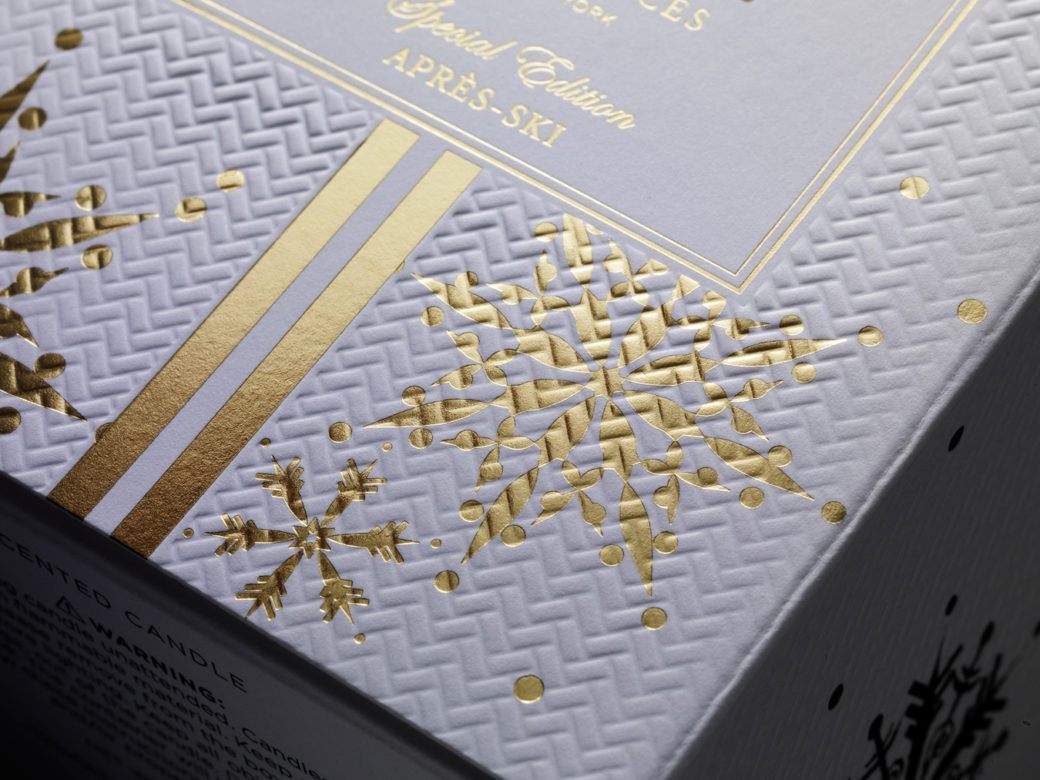
Similar to the sculptured process, the multi-level emboss or deboss features several different levels of texture. You will notice multiple angles and three-dimensional definition in this finish.
Single-Level

This style of embossing or debossing uses a single-level instead of multiple layers. It is a very trendy and modern style of finish.
14. HOT FOIL STAMPING
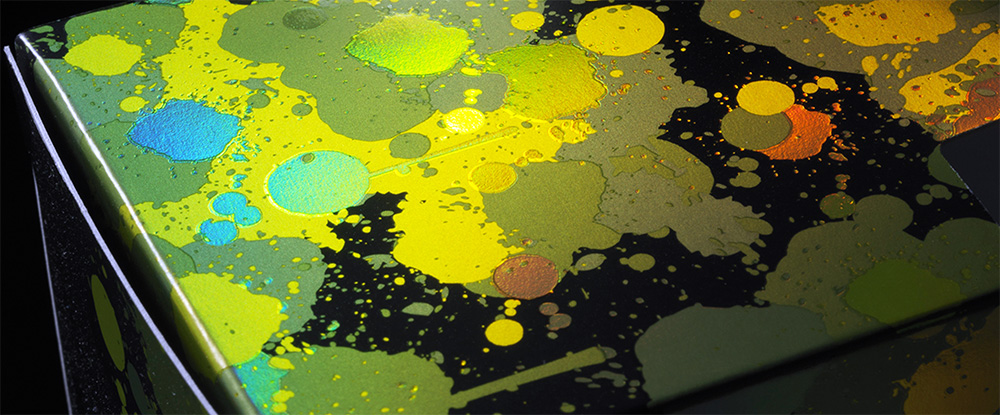
This effect is accomplished with a foil stamping machine that uses a metal plate that has been engraved with an image of the desired design required for the particular application. As the plate strikes a roll of foil film, it causes the foil to adhere to the plate. The metal plate then strikes the substrate that is to be imprinted and transfers the foil onto the area of the document requiring the metallic effect. The result is a document that has a highly reflective image with a bright and dense metallic appearance.

15. COLD FOIL PRINTING

This is a process that can be done in-line on a press. Using a standard printing plate, an image is printed onto a substrate with the use of a UV-curable cold foil adhesive. A UV dryer then activates the adhesive. The extracted foil is affixed to the printed adhesive and an image is created. Foil that does not adhere to the adhesive is removed.
16. METALLIC FOIL
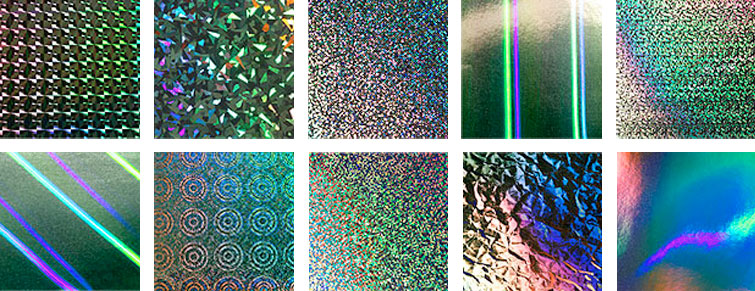
Adding a metallic foil to your design provides variation in texture while starkly highlighting certain brand or graphical elements. Try combining foil with embossing or debossing to add depth to the product. The image on the right is an excellent example of a successful execution of an aggressive and impressive deboss with the use of metallic hot foil stamp. Observing closely, the real craftsmanship came with the ability to hold the adhesion of the hot foil stamp in the very fine areas of the snow flake, especially as a deboss was done as well.
17. HOLOGRAPHIC FOILS
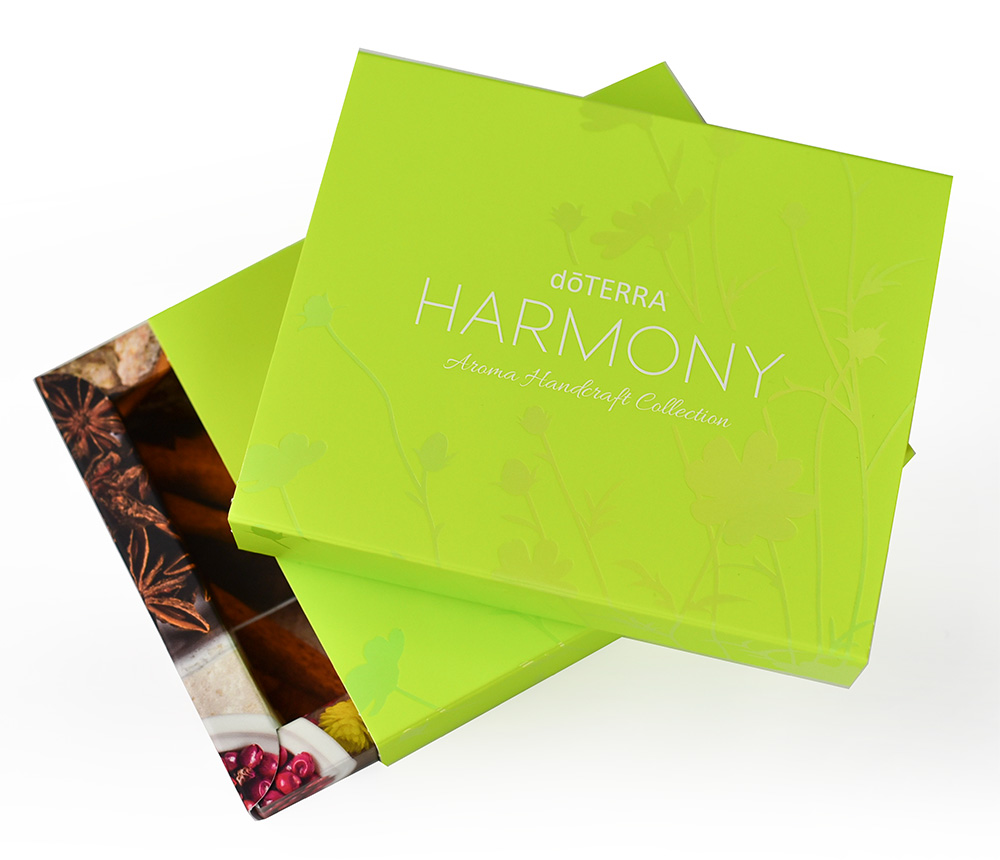
Using a holographic foil or rainbow foils gives the package or piece the ability to change color combinations when viewed at different angles. This is a great way to add a pop of color to solid packages. Holographic foils provide a fun and sophisticated flair to product packaging.
18. CLEAR FOILS

Having clear foils provide high reflectivity, yet allow the printed image to be seen underneath. This is particularly useful for foods, beverages, consumable products and health and beauty offerings. It can also be used to give customers a preview of a new product.
19. MICRO-ETCHING ON FOILS
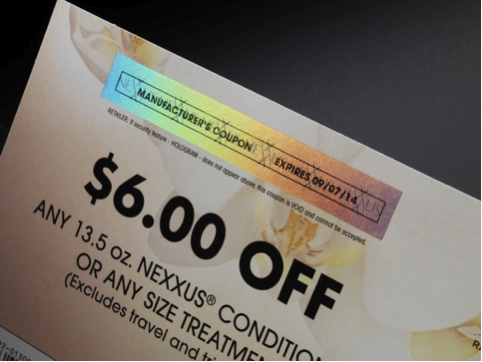
Foils used for security purposes may include geometrical shapes, patterns and even brand logos that shift as the viewer changes focus. Take advantage of the mesmerizing effect by using it in a solid block rather than a border or small stamp.
For security measures, a foil with micro-etching can help prevent counterfeiting of items such as high-value coupons (shown above) that could easily be duplicated, causing retailers major losses as manufacturers will not recompense fraudulent coupons.
Perfect for small or large accents, foil is a beautiful finish to catch customers’ eyes.
20. DIE CUTTING

Die cutting, a post-press finish, allows packaging and print pieces to have unique cutouts that can vary from simple to extremely complex. From shapes to letters, die cutting draws attention to the dimensional nature of the piece and the character of the substrate itself.
FIND CREATIVE PRINT FINISHES & EFFECTS WITH JOHNSBYRNE
Partnering with an industry expert like JohnsByrne helps you create the desired effect for each project. Our team of experts have years of experience creating packaging that is protective, unique, appealing and consistent with your branding. To schedule a consultation and get started on your next project today, contact us at JohnsByrne today.
Related Posts
As a leading provider of premium packaging and custom print solutions to the Beauty & Wellness, Spirits, Financial Services, Consumer Products and Entertainment markets, JohnsByrne … Elevating Brands Through Advanced Digital Enhancement
JohnsByrne is pleased to announce that we’ve received an impressive seven awards in the categories of Innovation and Sustainability at the 80th Anniversary of the … Unboxing Award-Winning Innovative & Sustainable Packaging
Standing out in today’s competitive market is vital to keeping your brand alive – no matter what industry you’re in. Since packaging is the first … Lenticular Printing
